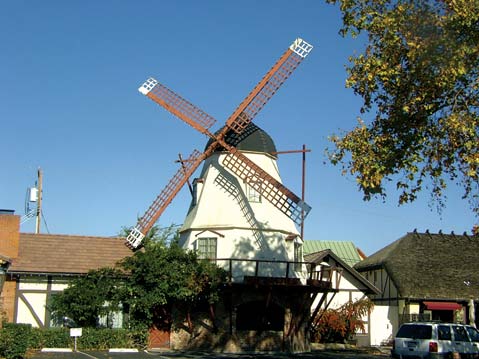Danish Days Not Very Danish
A Real Dane Checks Out the Annual Solvang Event

The other week Solvang hosted its annual Danish Days Celebration for the 75th time — authentic foods, music, folk dancing, and parades. Of course, as a real native of Denmark, I had to check that out.
I remember visiting the Danish capital of California for the first time six years ago when I’d just moved from Denmark to Santa Barbara to do a 10-month study visit. Feeling unimpressed and a bit insulted, I thought long and hard about this make-believe Danish town which to me seemed more like an Austrian village that had been sneezed on by a Norwegian with Danish ancestry. Authentic is not the word I would use to describe the Danish-founded city — but, then again, strolling through Chinatown in New York is nothing like walking the streets of any village, town, or city in China.
After a handful of visits and a lot of headshaking — and despite the naïve and old-fashioned image that Solvang gives of Denmark — I have come to understand why locals and tourists find pleasure in visiting the Danish-American city. The place is indeed fascinating.
A bit anxious of what was awaiting me during the so-called Danish Days Celebration, I brought along my five-year old “sister” Kaci, the middle child of the host family I lived with six years ago. If anything, she can brighten even your darkest day.
Driving into Solvang, you could feel the festivities going on. Danish and American flags decorated the streets, people of all ages were strolling around, some dressed in old-fashioned outfits, others dressed like Vikings. Needless to say, we do not wear such clothes anymore and Vikings haven’t been around for ages. Also, it puzzled me why aebleskiver was served as breakfast when in Denmark they are served as snacks or desserts only during Christmas. And as an avid aebleskiver eater, may I just add that the American version of aeblerskiver is nothing but a nice try.
Anyway, our first stop was the Lego play area. Lego is the essence of my childhood, and I still to this day enjoy playing with the multicolored plastic building blocks. As we make our way to Copenhagen Drive to catch the Children’s Parade, a trio is playing music on the stage at Solvang Park. All dressed in antiquated Danish clothing — which reminds me more of Norway than of Denmark — they play what I assume is Danish music from way back when. I do not recognize the music, nor do I understand the lyrics. Kaci comes to the conclusion that it is “definitely not Spanish” because she knows how to say aqua. I decide that it is not Danish either.
We make it to Copenhagen Drive in time for the Children’s Parade. It might just be the shortest parade I have ever seen, but one balloon and “hundreds and hundreds of candies” later, we walk back to Solvang Park for some face painting, bouncy castle fun, and closing ceremonies.
Before leaving town, we visit Olsen’s Danish Village Bakery on Mission Drive. All sorts of familiar pastries catch my eye and, for the first time, a feeling of familiarity overwhelms me. The lady in front of me in the line starts ordering pastries with a heavy Danish accent. Like me, she seems to be impressed with the familiar selection of treats and has clearly made up her mind to try everything she recognizes. I must say that the bakeries in Solvang do bring a certain authenticity to the Danish feel of the city.
Upon leaving Solvang, I can’t help but feel disappointed. None of the booths at Solvang Park served traditional Danish foods, and despite the Danish music that was played, none of which you would ever hear in Denmark anymore, except for at the annual European Medieval Festival in my hometown, nothing about the Danish Days Celebration felt particularly Danish to me.



